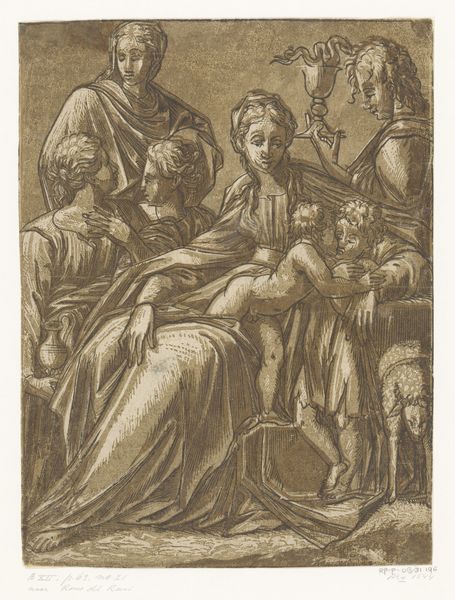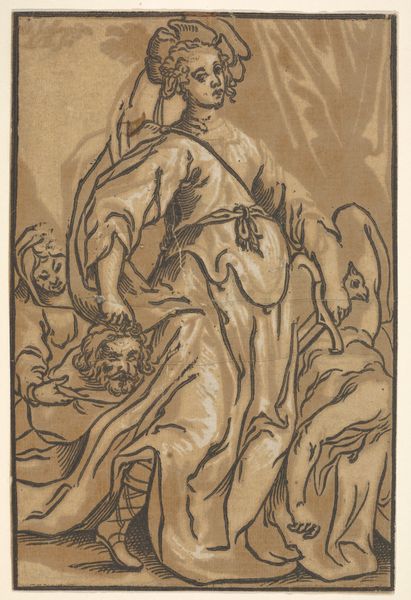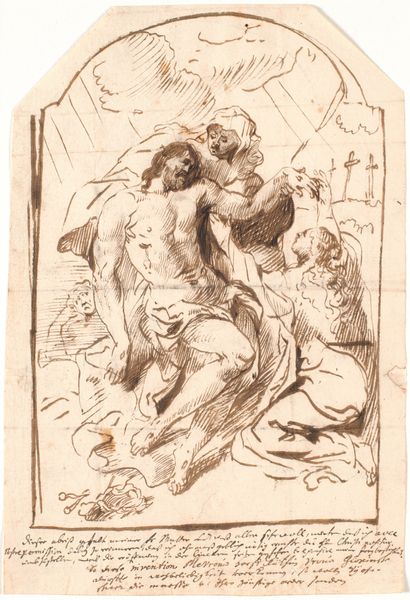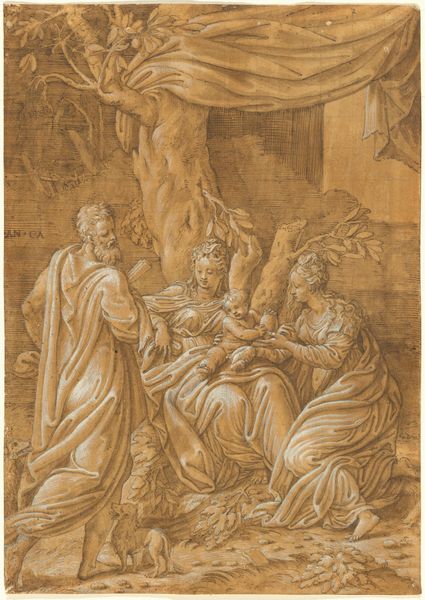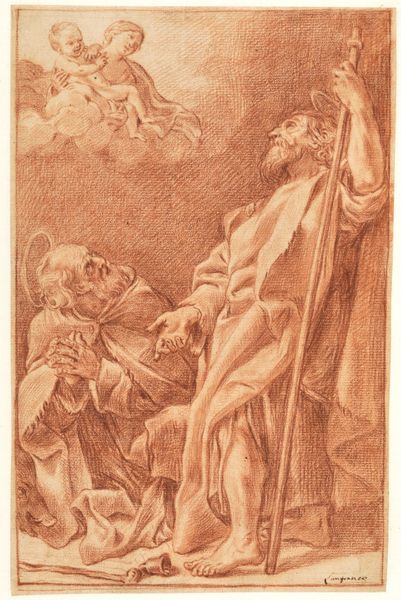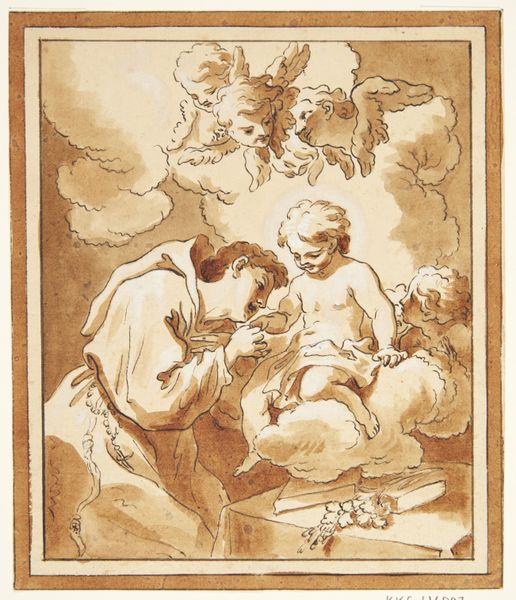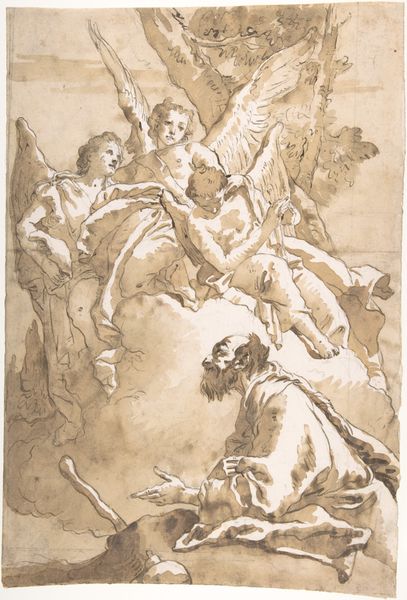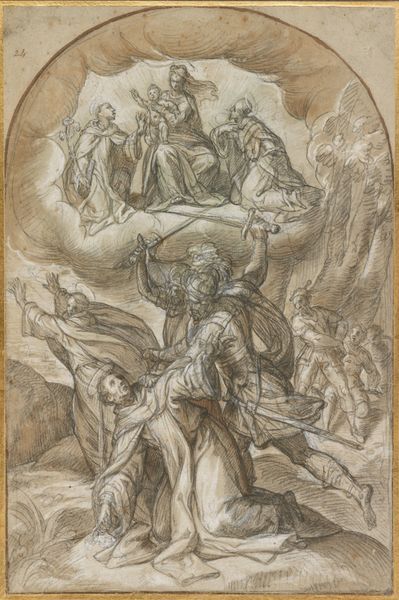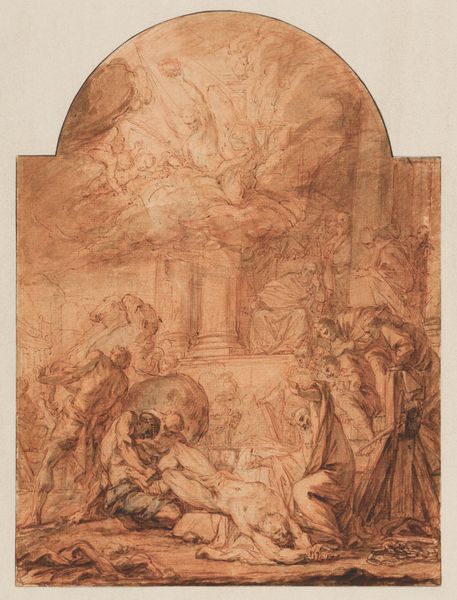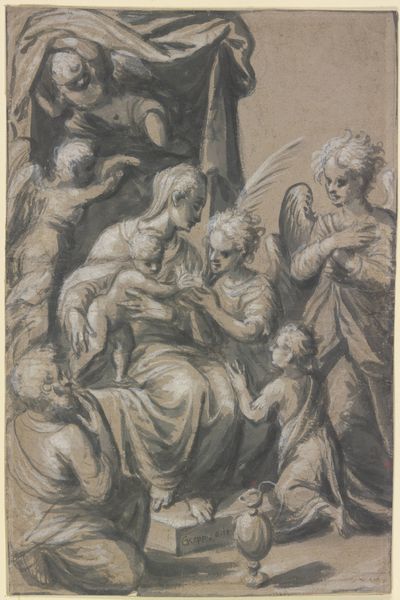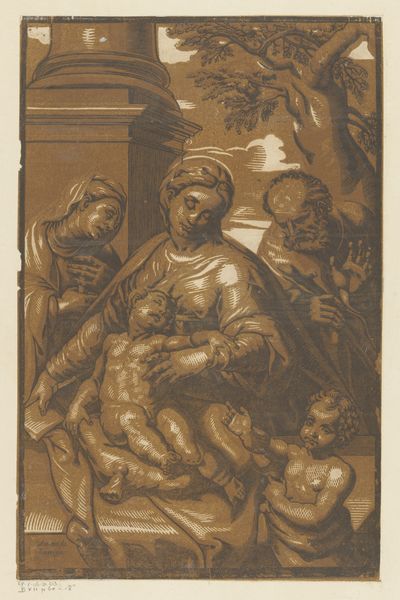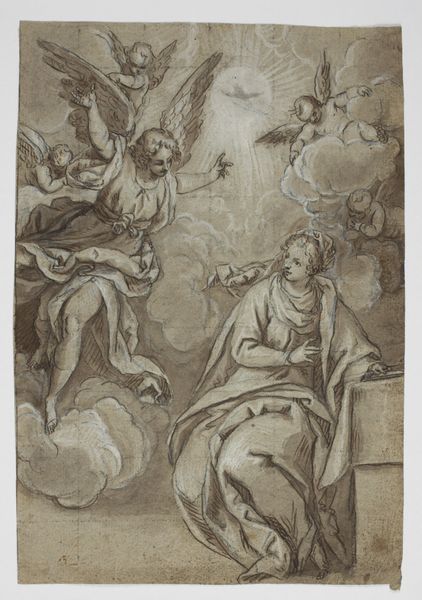
En engel kommer til en sovende eller grublende mand, der omgivet af får, kvæg og duer, sidder i et øde landskab. Englen vækker Elias i ørkenen 1642 - 1664
0:00
0:00
drawing, ink
#
drawing
#
narrative-art
#
baroque
#
ink painting
#
landscape
#
figuration
#
ink
#
history-painting
Dimensions: 320 mm (height) x 422 mm (width) (bladmaal)
Editor: Here we have Michel Corneille’s ink drawing, "An angel comes to a sleeping or pensive man, who, surrounded by sheep, cattle, and doves, sits in a desolate landscape. The angel awakens Elijah in the desert," created sometime between 1642 and 1664. The sepia tones give it an almost dreamlike quality. What aspects of the composition stand out to you? Curator: Immediately, the dynamism within a limited tonal range commands attention. Notice how Corneille masterfully employs cross-hatching to create a rich tapestry of textures. The linearity suggests both the figures' forms and also contributes to the landscape's sense of depth and atmosphere. Does the angel's gesture communicate specific information about the subject, for example, as if directing one’s eye towards a significant element in the narrative or to indicate the figure's spatial relationship to the world around him? Editor: That's a great point about the dynamism. And I do see how the angel's gesture pulls the eye upward toward the vast sky in the background. But doesn't the restricted color palette seem limiting? Curator: On the contrary, the economy of color serves to focus our gaze. We begin to discern subtle gradations of value and, by contrast, variations in texture. How does Corneille's formal choices shape our reading of its subject? Editor: I guess the limited color does force you to really focus on the line work. I appreciate how it highlights the drama of the scene without needing vibrant color. I hadn't considered that choice to be so…purposeful. Curator: Exactly. Focusing solely on the formal elements offers a deeper understanding of its essence. Editor: This makes me see that looking closely at line and tone can tell us so much about intention, more than just historical context.
Comments
No comments
Be the first to comment and join the conversation on the ultimate creative platform.
